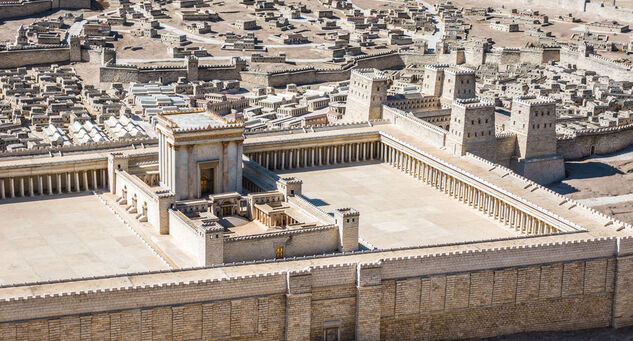The story of the woman caught in adultery and brought before Jesus in the temple courtyard by the scribes and the Pharisees is found in John 8:2-11. The teachers of the law hoped to trap Jesus and so, after reminding him that the law of Moses demanded that an adulterer be stoned to death (Leviticus 20:10), they asked him how he would judge her. This was obviously a well-thought-out trap. If Jesus concurred with the biblical law, the Pharisees could report him, as it was illegal for the Jews to execute anyone under the Roman occupation. On the other hand, if Jesus said she should be spared, his enemies could use the fact as evidence that he did not follow biblical teachings.
It was at this point that Jesus stooped down and began to write in the dust in the temple courtyard. This prompts two obvious questions: Why did he write in the dust (as opposed to simply speaking or writing what he wanted to write on some parchment or other writing surface), and what was it that Jesus wrote?
We can answer the first question with some certainty. The event described by John seems to have taken place on a Sabbath day (John 9:1) in which all the many Sabbath laws made by the Jews were in force. Although the biblical requirement for keeping the Sabbath law was simply to refrain from work (Exodus 20:8-11), the Jewish theologians defined many activities as “work,” including the activity of writing. But these human religious leaders also determined that “writing” was making any permanent mark such as writing with ink on parchment. According to them, writing in the dust was permissible on the Sabbath, however, because the writing was not permanent and would soon disappear. This law was first recorded in the Jewish Mishnah around AD 200, but it was doubtless in effect well before that and probably followed in Jesus’ day.
The strict application of the Sabbath law to writing in this era certainly provides the most likely explanation of why Jesus wrote in the dust of the temple court, but what about what he wrote? We cannot be certain in this area and scholars have long argued various explanations. But two possibilities stand out.
Whatever Jesus wrote, it had the immediate effect of piercing the consciences of the woman’s accusers and causing them “… to go away one at a time, the older ones first, until only Jesus was left, with the woman still standing there” (John 8:9). It is often said that what Jesus wrote consisted of laws that the accusers themselves had broken – perhaps a list of the Ten Commandments (Exodus 20), or even a single all-encompassing law such as “… [you shall] love your neighbor as yourself” (Leviticus 19:18). Jesus frequently responded to questions using scriptures, so it is very possible that he answered here with a scriptural summary of the law.
The main problem with this idea is that the self-righteous Pharisees and other accusers of the woman could well have justified their own sins and not been moved by such scriptures. Perhaps an even more likely possibility is that Jesus wrote down one of the numerous biblical statements stressing that everyone has sinned (Psalm 143:2, Ecclesiastes 7:20, etc.). To then immediately state, after writing such a verse: “… Let any one of you who is without sin be the first to throw a stone at her” (John 8:7) might well have placed the woman’s accusers in an impossible situation.
Another possibility often suggested is that Jesus actually wrote down the names of the individuals accusing the woman along with their sins. A verse in Jeremiah is often quoted in this regard: “Lord, you are the hope of Israel; all who forsake you will be put to shame. Those who turn away from you will be written in the dust because they have forsaken the Lord” (Jeremiah 17:13). The point here is that by writing down the names and sins of the accusers Jesus put them to shame, and they could not then cast the stones of judgment. While this possibility may be a little less likely than that which we considered above, we should note that Jesus wrote not once, but twice (John 8:8), so it is possible that after writing a verse stressing that all have sinned he then proceeded to “name names.”
Ultimately, of course, we cannot know with any certainty what Jesus wrote on the ground, and had it been necessary to know in order to understand the story the words written would doubtless have been recorded. Nevertheless, we do have a very likely reason why Jesus wrote on the dusty ground, and of the possibilities considered it may be most likely that his writing consisted of a verse or verses of scripture that affirmed “…there is no one who does not sin” (1 Kings 8:46).
By forcing the self-righteous Pharisees and teachers of the law to accept their own guilt and to drop their charges, Jesus was able to show mercy to the adulterous woman while still telling her “Go now and leave your life of sin” (John 8:11).

 RSS Feed
RSS Feed
